FAQ - Advanced Bathroom Queries
Is It Ok to Flush Cigarette Buds

Were you aware that each year, around 4.5 trillion cigarette butts are discarded improperly across the globe?
But what happens when these little toxic waste bombs end up in our sewer systems?
In this article, I will explore the environmental impact of flushing cigarette buds, the potential risks to our sewer systems, and the harmful chemicals they contain.
Join me as we delve into the facts and discover the importance of responsible disposal methods for cigarette buds.

Key Takeaways
- Flushing cigarette buds contributes to water pollution and can harm aquatic life and ecosystems.
- Proper disposal methods, awareness campaigns, and stricter regulations are necessary to prevent the flushing of cigarette buds.
- Flushing cigarette buds can cause clogs and blockages in sewer pipes, leading to infrastructure damage and increased maintenance costs.
- Cigarette buds contain harmful chemicals such as nicotine, heavy metals, and carcinogens, which can leach into soil and water, posing risks to human health and the environment.
Environmental Impact of Flushing Cigarette Buds
The environmental impact of flushing cigarette buds is significant, as each flushed bud contributes to the pollution of our waterways. When cigarette buds are discarded in toilets and flushed down, they enter our wastewater system. However, these filters aren’t designed to be easily broken down, and as a result, they can end up in our rivers, lakes, and oceans. This leads to potential pollution of these water bodies, as the chemicals present in the buds can leach into the water, harming aquatic life and disrupting ecosystems.
Waste management plays a crucial role in addressing this issue. Proper disposal methods, such as using designated cigarette disposal bins, can help prevent the flushing of buds. By raising awareness and providing accessible disposal options, we can encourage individuals to dispose of their cigarette buds responsibly. Additionally, implementing stricter regulations and fines for improper disposal can also serve as a deterrent.
Furthermore, educational campaigns can be effective in informing the public about the environmental consequences of flushing cigarette buds. By highlighting the potential pollution caused by this action, individuals can make more informed choices and adopt more environmentally-friendly habits.
Potential Risks to Sewer Systems
Flushing cigarette buds poses potential risks to sewer systems and can lead to clogs and blockages. The improper disposal of cigarette buds through flushing can have detrimental effects on both the environment and public health. Here are some potential risks associated with flushing cigarette buds into sewer systems:
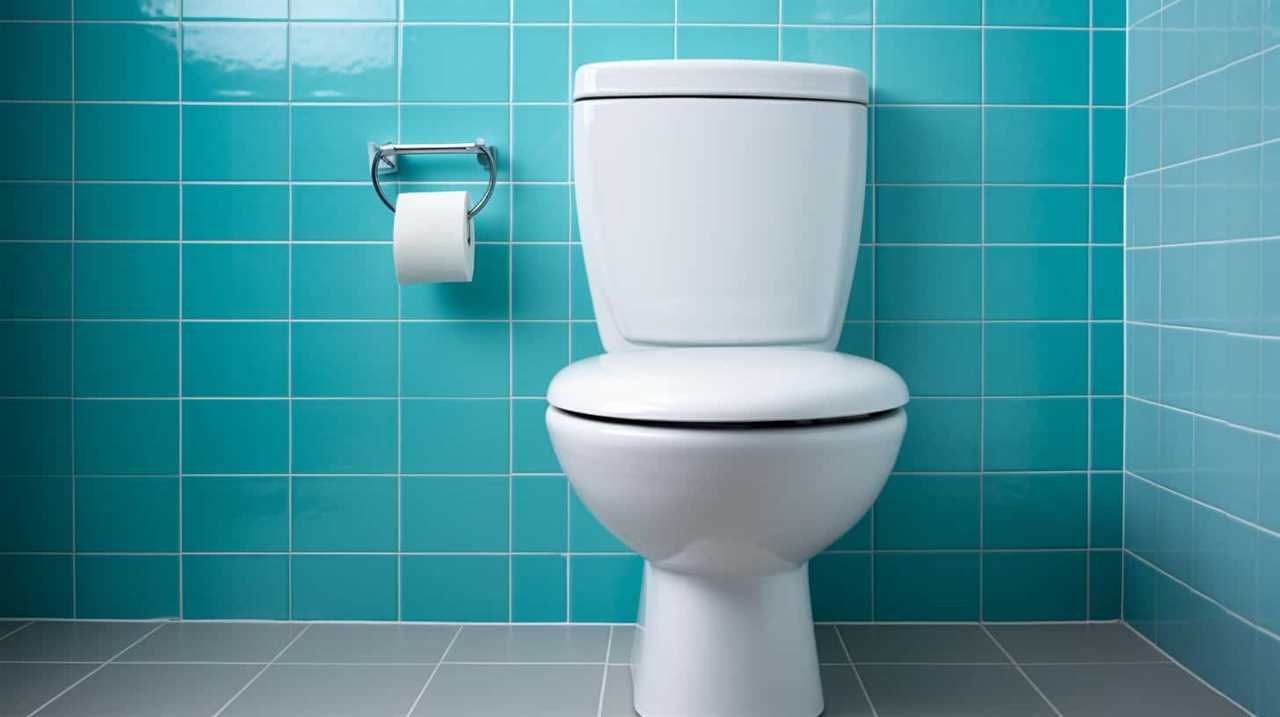
- Clogs and blockages: Cigarette buds don’t easily break down in water and can accumulate in pipes, leading to clogs and blockages. These obstructions can disrupt the flow of wastewater and cause sewage backups, resulting in costly repairs and potential health hazards.
- Damage to infrastructure: The accumulation of cigarette buds in sewer systems can cause damage to the infrastructure. The filters in cigarette buds contain plastic fibers that can accumulate over time and contribute to pipe corrosion, leading to leaks and structural damage.
- Contamination of water sources: The chemicals present in cigarette buds, such as nicotine and heavy metals, can leach into the water supply when flushed. This can contaminate drinking water sources and pose potential health risks to humans and wildlife.
- Increased maintenance costs: Flushing cigarette buds increases the frequency of maintenance and cleaning required for sewer systems. This puts a strain on municipal resources and can lead to higher costs for taxpayers.
- Environmental impact: The improper disposal of cigarette buds can have a negative impact on the environment. The chemicals in the buds can pollute waterways, harm aquatic life, and contribute to the degradation of ecosystems.
It is essential to dispose of cigarette buds properly in designated receptacles to avoid these potential risks to sewer systems and the environment.
Harmful Chemicals in Cigarette Buds
As I delve into the topic of harmful chemicals in cigarette buds, it becomes evident that these toxic substances pose significant risks to both the environment and public health. Cigarette butts aren’t just small pieces of litter; they contain harmful substances that can leach into the soil and water, causing pollution and endangering ecosystems.
Cigarette buds are made from a combination of tobacco, paper, and a filter, which is often made of cellulose acetate, a type of plastic. When a cigarette butt is discarded, it starts to break down, and the harmful chemicals within it are released. These chemicals include nicotine, heavy metals like lead and cadmium, and various carcinogens, such as benzene and formaldehyde.
When cigarette butt pollution occurs, these harmful substances can contaminate soil and water sources. Nicotine, for example, is toxic to aquatic organisms and can disrupt their reproductive and neurological systems. Heavy metals can accumulate in plants and animals, eventually entering the food chain and posing risks to human health.
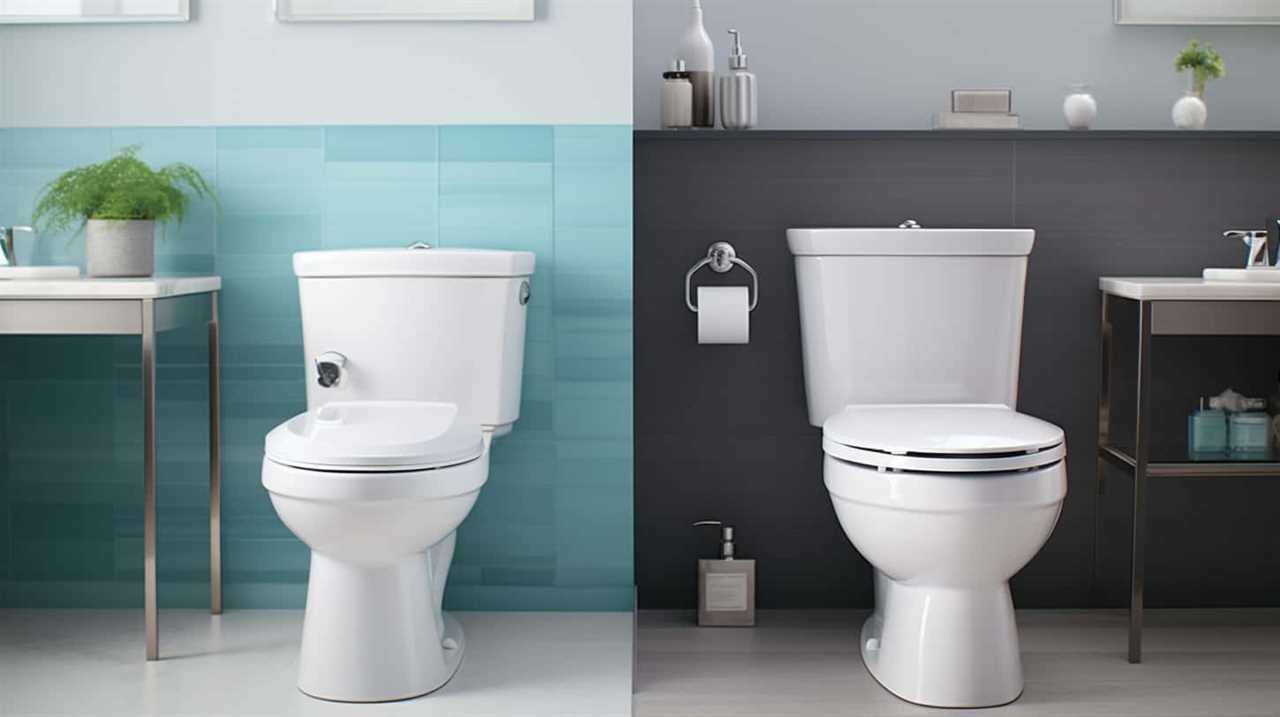
Understanding the presence of harmful chemicals in cigarette buds highlights the urgent need for proper disposal and the importance of raising awareness about the environmental and public health risks associated with cigarette butt pollution. Transitioning into the subsequent section about the impact on water quality, it’s crucial to explore how these chemicals can affect our most precious resource: water.
Impact on Water Quality
Cigarette butt pollution can significantly impact the quality of water. When cigarette litter makes its way into our water systems, it poses a serious threat to the environment and human health. Here are some key points to consider about the impact of cigarette buds on water quality:
- Water pollution: Cigarette buds contain harmful chemicals such as nicotine, heavy metals, and plastic fibers. When these buds are flushed or washed into water bodies, they release these toxins, leading to water pollution.
- Contamination: The chemicals in cigarette buds can contaminate the water, making it unsafe for aquatic life as well as for human consumption. This contamination can have long-lasting effects on the ecosystem.
- Microplastics: Cigarette filters are made of a type of plastic called cellulose acetate. When these filters break down in water, they release microplastics, which can be ingested by marine organisms, causing harm to them and potentially entering the food chain.
- Impact on biodiversity: Water pollution from cigarette litter can harm aquatic organisms, disrupt ecosystems, and decrease biodiversity. This can have cascading effects on the entire ecosystem, including the loss of important species.
- Human health risks: Contaminated water can pose health risks to humans when used for drinking or recreational purposes. The toxic chemicals present in cigarette buds can accumulate in the water and have detrimental effects on human health.
Considering the detrimental impact of cigarette litter on water quality, it’s crucial to find alternative ways of disposing of cigarette buds to protect our water resources and the organisms that depend on them.
As we delve into the effects of cigarette bud pollution on marine life, it becomes evident that the impact extends far beyond water quality.

Effects on Marine Life
Polluting water with cigarette butts has detrimental effects on marine life. Marine pollution caused by improper disposal of cigarette buds can lead to serious ecosystem disruption. The toxic chemicals found in cigarette filters, such as nicotine, heavy metals, and plastic fibers, can contaminate the water and harm marine organisms.
When cigarette butts are washed into rivers, lakes, or oceans, they release harmful substances that can be ingested by marine animals. This can lead to various health issues, including organ damage, reproductive problems, and even death. Additionally, the presence of cigarette butts in the water can alter the natural balance of ecosystems, affecting the entire food chain.
To better understand the impact of cigarette bud pollution on marine life, consider the following table:
| Marine Organisms | Effects of Cigarette Bud Pollution |
|---|---|
| Fish | Accumulation of toxins in tissues |
| Coral reefs | Decreased growth and bleaching |
| Seabirds | Ingestion of plastic fibers |
| Sea turtles | Intestinal blockage and death |
It is crucial to recognize the significant consequences of improper cigarette bud disposal on marine life. The pollution caused by this careless act disrupts the delicate balance of ecosystems and poses a threat to the survival of various marine organisms. Therefore, it is essential to address this issue and raise awareness about the importance of proper disposal methods.

In light of the harmful effects on marine life, it is necessary to explore the legal consequences of improper disposal of cigarette buds.
Legal Consequences of Improper Disposal
Improper disposal of cigarette buds can result in legal consequences due to the harmful impact on marine life. It’s crucial to understand the potential legal implications and fines associated with improper disposal. Here are a few key points to consider:
- Littering Laws: Disposing of cigarette buds improperly, such as throwing them on the ground or flushing them down the toilet, can be considered as littering. Many jurisdictions have strict laws against littering, and offenders may face fines and penalties.
- Environmental Protection: Improperly disposed cigarette buds can end up in water bodies, polluting the water and posing a threat to marine life. Environmental protection laws exist to safeguard ecosystems, and those who violate these laws may face legal consequences.
- Local Regulations: Different regions may have specific regulations regarding cigarette bud disposal. It’s essential to familiarize yourself with local laws and regulations to ensure compliance and avoid potential legal issues.
- Public Nuisance: Improper disposal of cigarette buds can also be considered a public nuisance. This is because it not only harms the environment but also affects the aesthetics of public spaces. In some cases, this may lead to additional fines or penalties.
- Awareness Campaigns: Many communities and organizations are actively raising awareness about the harmful effects of improper cigarette bud disposal. By participating in these campaigns and educating yourself about proper disposal methods, you can contribute to a healthier environment and avoid legal consequences.
Health Risks of Flushing Cigarette Buds
Flushing cigarette buds poses health risks that shouldn’t be ignored. Improper disposal of cigarette buds can have detrimental effects on both human health and public health. When cigarette buds are flushed down the toilet or thrown into the trash, they can end up in waterways or landfills, where they release toxic chemicals. These chemicals, such as nicotine, lead, and arsenic, can contaminate water sources and soil, potentially exposing humans and wildlife to harmful substances.
Nicotine, a highly addictive substance found in cigarettes, can have serious health effects. It can lead to increased heart rate, elevated blood pressure, and constricted blood vessels. Prolonged exposure to nicotine can also increase the risk of cardiovascular diseases and respiratory problems. In addition, the toxic chemicals present in cigarette buds can be ingested by marine animals and other wildlife, causing harm to their health and disrupting ecosystems.

Public health is also at risk when cigarette buds are improperly disposed of. The contamination of water sources and soil can have far-reaching consequences. It can lead to the contamination of drinking water supplies, posing a risk to human health. Moreover, the accumulation of cigarette buds in landfills can contribute to environmental pollution, affecting air quality and contributing to the overall degradation of the environment.
Given these health effects and the potential harm to public health, it’s crucial to explore proper disposal methods for cigarette buds.
Proper Disposal Methods for Cigarette Buds
To ensure the proper disposal of cigarette buds and reduce the risk of environmental contamination, I recommend adopting responsible disposal methods. It’s important to be aware of the impact that improperly disposing of cigarette buds can have on the environment. Here are some recommended disposal methods:
- Use designated cigarette disposal containers: Many public areas have designated containers specifically designed for the disposal of cigarette buds. These containers are often equipped with a small opening that allows for easy disposal while preventing the buds from being blown away by the wind.
- Carry a portable ashtray: Investing in a portable ashtray allows you to safely store your cigarette buds until you can find a proper disposal container. These portable ashtrays are small and convenient to carry around, ensuring that you have a responsible way to dispose of your cigarette buds wherever you go.
- Always extinguish the cigarette before disposal: Before disposing of your cigarette bud, make sure it’s completely extinguished. This helps prevent accidental fires and ensures a safer disposal process.
- Don’t litter: It’s important to refrain from throwing cigarette buds on the ground or out of car windows. Littering not only contributes to environmental pollution but also poses a fire hazard.
- Support community clean-up initiatives: Get involved in community clean-up initiatives that focus on collecting and properly disposing of cigarette buds. By actively participating in these events, you can contribute to raising responsible awareness and promoting a cleaner environment.
Promoting Awareness and Responsible Disposal
I believe it’s essential to promote awareness and responsible disposal of cigarette butts due to their improper disposal posing environmental risks.
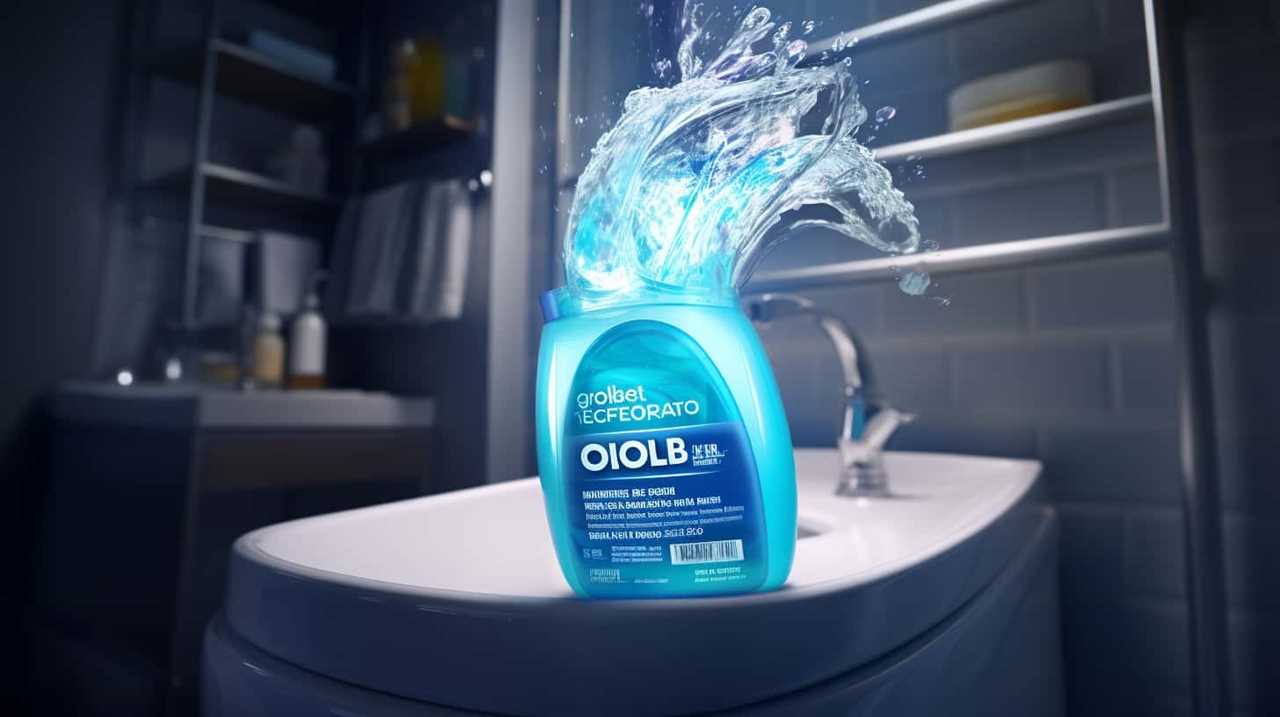
Proper cigarette butt disposal methods, such as using designated ashtrays or portable pocket ashtrays, can help prevent the harmful effects of littering.
Flushing cigarette butts down the toilet isn’t recommended as it can lead to clogged pipes, water pollution, and potential harm to aquatic life.
Proper Cigarette Butt Disposal
When considering the proper disposal of cigarette butts, it’s important to raise awareness and promote responsible disposal methods. Cigarette butt pollution is a significant environmental issue, as they contain toxic chemicals that can leach into the soil and water, harming plant and aquatic life. To address this problem, here are some alternative disposal methods to consider:
- Use designated cigarette butt receptacles or ashtrays to safely dispose of your cigarette butts.
- Carry a portable ashtray with you to dispose of your cigarette butts when you’re on the go.
- Don’t throw cigarette butts on the ground or out of car windows.
- Avoid flushing cigarette butts down the toilet, as they can contribute to clogged pipes and water pollution.
- Support initiatives that promote responsible cigarette butt disposal and educate others about the environmental impacts of improper disposal.
Environmental Impact of Flushing
Continuing the discussion on proper cigarette butt disposal, flushing cigarette buds should be avoided due to the environmental impact it can have. Flushing cigarette butts down the toilet can contribute to sewer pollution and microplastic contamination.
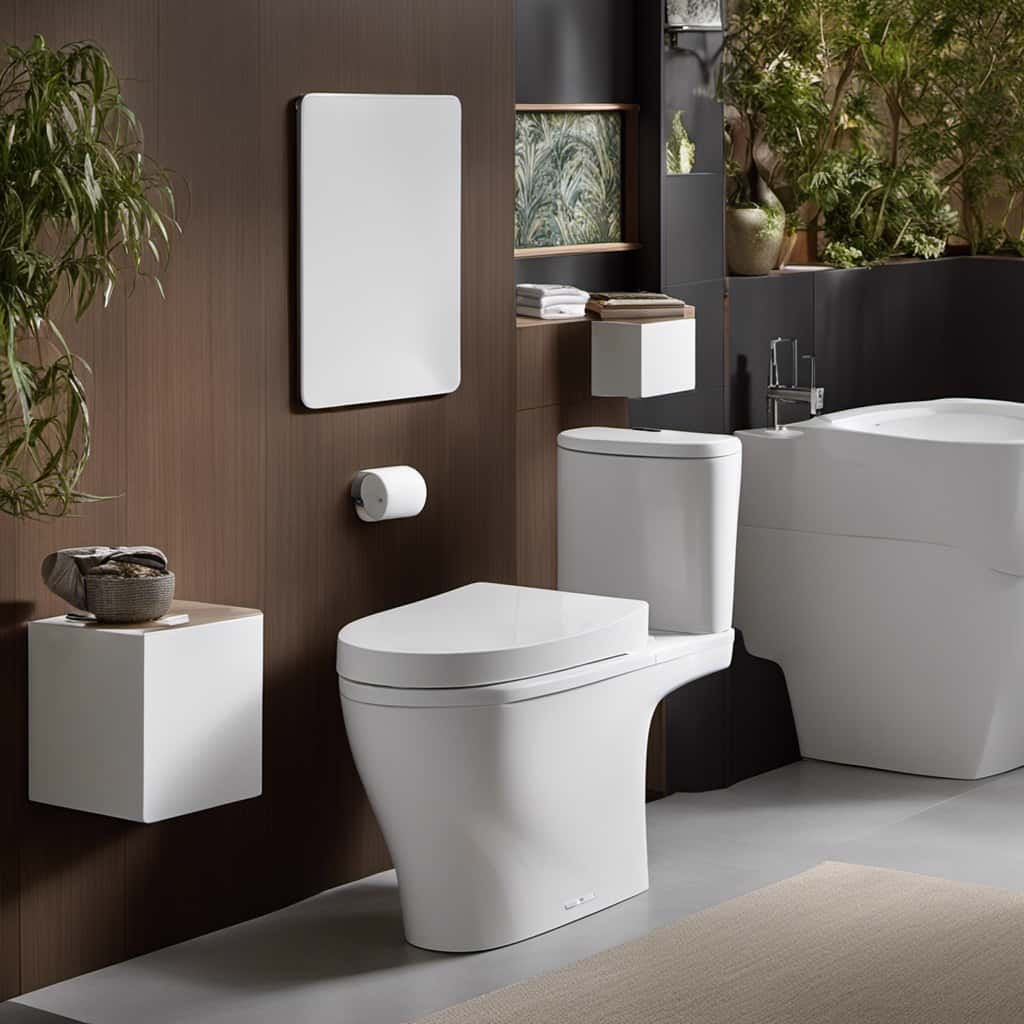
When cigarette butts are flushed, they enter the sewage system and can end up in rivers, lakes, and oceans. These butts contain harmful chemicals and toxins that can contaminate water sources, posing a threat to aquatic life and ecosystems.
Additionally, cigarette filters are made of a type of plastic called cellulose acetate, which doesn’t break down easily. As a result, they contribute to the growing problem of microplastic pollution in our waterways.
To promote a cleaner environment, it’s crucial to raise awareness about responsible disposal methods and encourage smokers to properly dispose of their cigarette butts in designated containers.
Conclusion: Making Informed Choices
To make informed choices regarding the disposal of cigarette buds, it’s crucial to consider the environmental impact and follow proper disposal methods. As responsible individuals, we’ve the power to minimize the negative effects of cigarette bud disposal on our environment. Here are some key points to consider when making decisions about cigarette bud disposal:
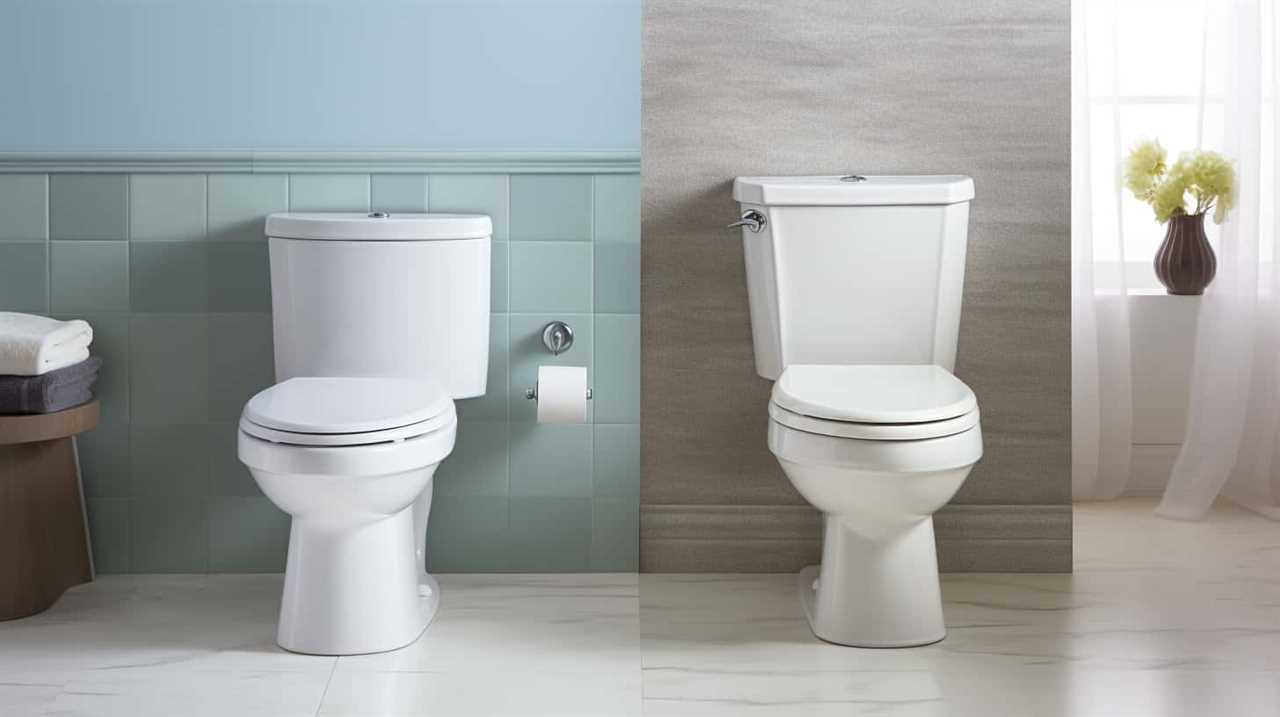
- Educate yourself: Learn about the environmental consequences of flushing cigarette buds and the proper disposal methods available. Understanding the impact of your choices empowers you to make responsible decisions.
- Use designated containers: Many public spaces offer designated containers for cigarette bud disposal. Utilizing these containers ensures that the buds are disposed of properly and reduces the risk of them ending up in our waterways.
- Encourage others to be responsible: By promoting responsible behavior and educating those around you, you can create a culture of proper cigarette bud disposal. Encourage friends, family, and coworkers to adopt environmentally friendly practices.
- Support legislation: Advocate for stricter regulations and penalties regarding the improper disposal of cigarette buds. By supporting legislation that promotes responsible behavior, we can have a larger impact on reducing environmental harm.
- Explore alternatives: Consider using alternatives to smoking that don’t produce cigarette buds. Vaping devices and smokeless tobacco products are options that can help minimize cigarette bud waste.
Frequently Asked Questions
How Long Does It Take for Cigarette Buds to Decompose in Water?
Cigarette buds pollution is a serious environmental issue.
When discussing the decomposition time of cigarette buds in water, it’s important to consider the environmental impact of flushing them.
Cigarette buds contain toxic chemicals and non-biodegradable materials that can harm aquatic life and pollute water sources.
While the exact decomposition time may vary depending on conditions, it’s clear that flushing cigarette buds isn’t okay and contributes to environmental pollution.
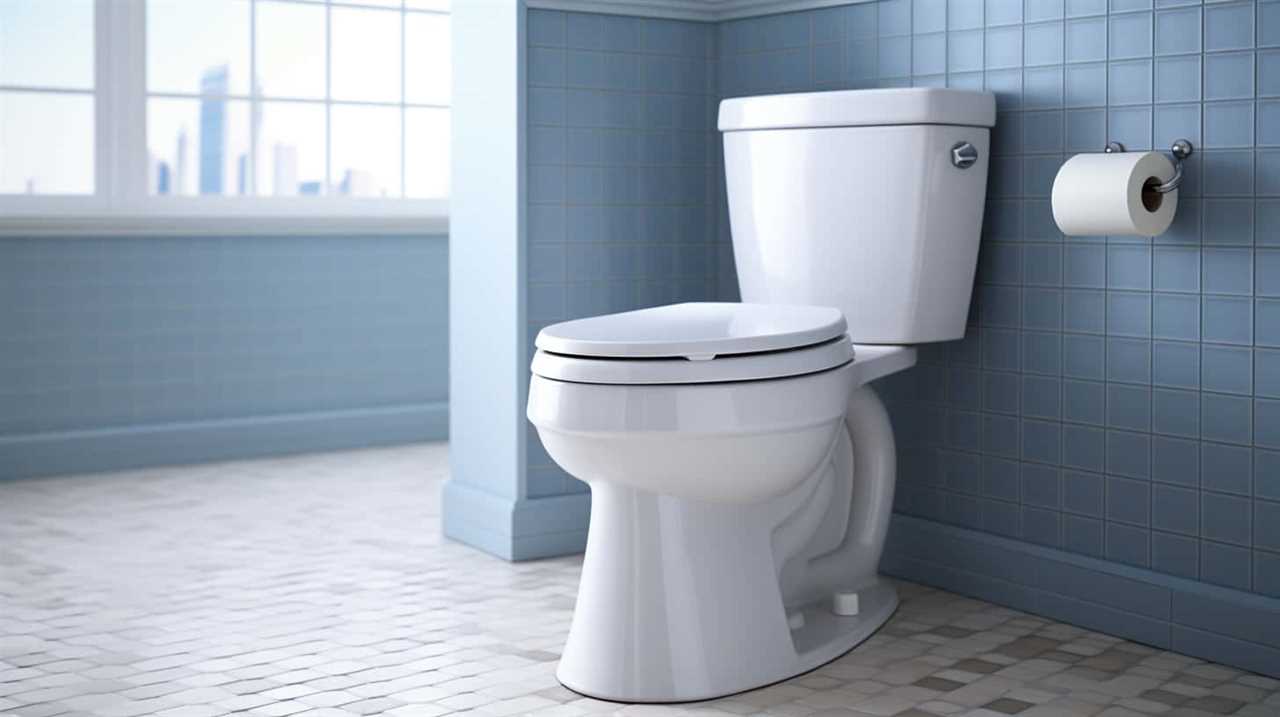
Are There Any Eco-Friendly Alternatives to Flushing Cigarette Buds?
Eco-friendly alternatives and sustainable disposal methods for cigarette buds are essential to protect the environment.
Flushing cigarette buds isn’t recommended due to the harmful chemicals they contain, which can pollute water sources.
Instead, consider using portable ashtrays or designated cigarette disposal bins. These options provide a convenient way to safely dispose of cigarette buds without causing harm to the environment.
Can Flushing Cigarette Buds Contribute to the Spread of Diseases?
Flushing cigarette buds may indeed contribute to the spread of diseases. When we flush them down the toilet, they end up in our water systems, contaminating the environment and potentially harming aquatic life.
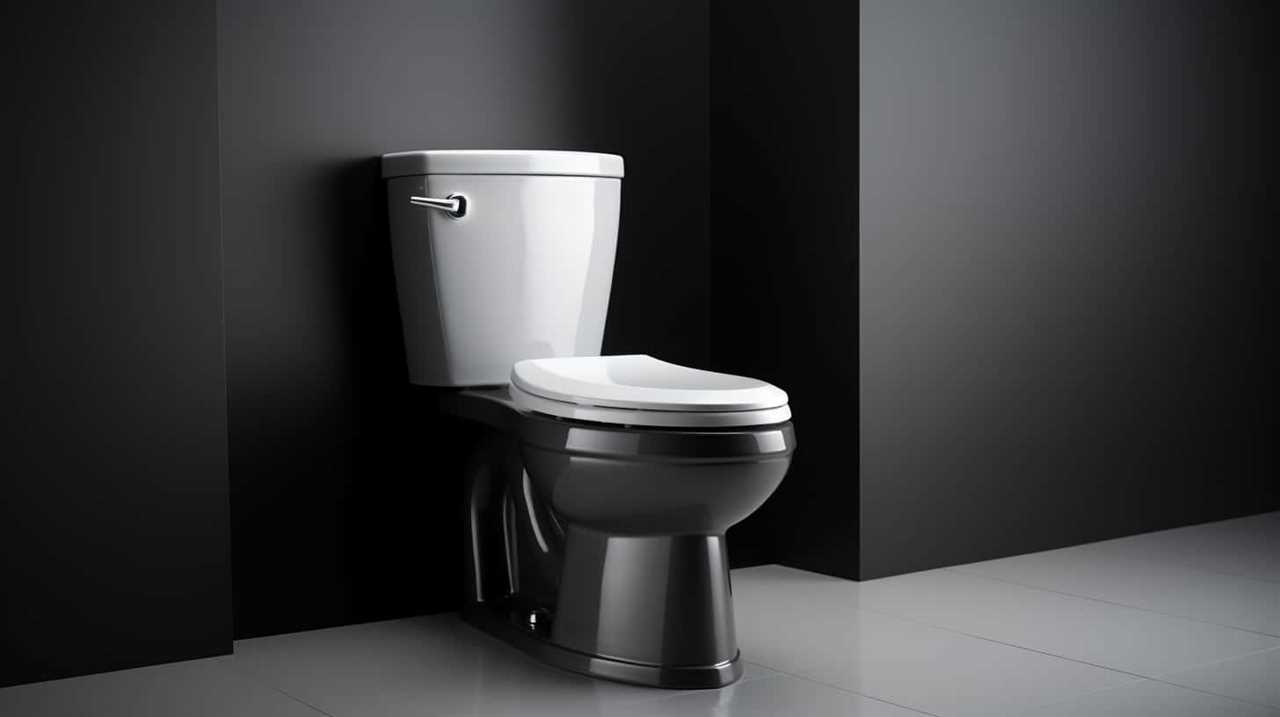
Moreover, these buds contain harmful chemicals that can leach into the water, posing a risk to human health as well.
To prevent these negative consequences, it’s important to dispose of cigarette buds properly, such as in designated ashtrays or trash bins.
What Are the Potential Consequences of Flushing Cigarette Buds in Areas With Limited Water Resources?
Flushing cigarette buds in areas with limited water resources can have potential consequences for water contamination and the environment. When cigarette buds are flushed, they can release harmful chemicals that can contaminate water sources, posing a risk to both human health and the ecosystem.
Additionally, the improper disposal of cigarette buds can contribute to litter and pollution, further degrading the environment. It’s important to properly dispose of cigarette buds in designated receptacles to minimize these negative impacts.

How Can Individuals Help in Promoting Responsible Disposal of Cigarette Buds?
In promoting responsible disposal of cigarette buds, individuals can take various initiatives.
One effective way is to participate in community campaigns that raise awareness about the environmental impact of flushing cigarette buds.
By spreading knowledge and encouraging proper disposal methods, we can collectively reduce the harmful effects of discarded cigarette buds on our water resources.
Taking personal responsibility and actively advocating for change is crucial in ensuring a sustainable future for our communities.

Conclusion
In conclusion, it’s crucial to avoid flushing cigarette buds due to their detrimental effects on:
- the environment
- sewer systems
- water quality
- marine life
- human health
The harmful chemicals in these buds can contaminate water sources and pose risks to aquatic organisms. To promote responsible disposal, individuals should be aware of the proper methods and actively participate in raising awareness about the negative impacts of flushing cigarette buds.
Let’s choose to make informed choices and protect our planet.
With an impeccable eye for detail and a passion for bathroom-related, Ava leads our editorial team gracefully and precisely.
Under her guidance, Best Modern Toilet has flourished as the go-to resource for modern bathroom enthusiasts. In her free time, you might find Ava exploring antique shops and looking for vintage bathroom fixtures to add to her collection.
FAQ - Advanced Bathroom Queries
Why Won’t My Toilet Flush Without Power

If you’ve ever been stuck in a challenging situation during a power outage, frantically trying to figure out why your toilet isn’t flushing, don’t worry – we’re here to explain this common dilemma.
In this article, we’ll explore the role of electricity in toilet flushing and delve into the components of a power-dependent flushing system. We’ll also uncover the reasons behind toilet flushing failure during power outages and provide alternative methods to ensure a functional toilet, even without power.
So, let’s dive in and master the art of flushing without electricity!
Key Takeaways
- Electricity is essential for the flush mechanism of modern toilets.
- Power outages can disrupt the functioning of the components that control flushing.
- Alternative methods for flushing a toilet without power include manually filling the tank, pouring water into the bowl, or using portable toilet options.
- Preparing for power outages involves installing backup power sources, stocking up on water, considering water-saving toilets, and educating oneself on alternative flushing methods.
The Role of Electricity in Toilet Flushing
In our experience, the main role of electricity in toilet flushing is through the operation of the electrically-powered flush mechanism. This mechanism is responsible for initiating the flushing action by activating the water flow and creating the necessary pressure to remove waste from the bowl.

The impact of water pressure on toilet flushing can’t be overstated. Adequate water pressure ensures a strong and efficient flush, while low water pressure can result in incomplete waste removal and potential clogs.
The history of electricity in toilet technology dates back to the early 20th century when electrically-powered flush mechanisms were first introduced. Since then, advancements in technology have led to more efficient and effective flushing systems, improving overall toilet performance.
Understanding the role of electricity in toilet flushing is crucial for maintaining a properly functioning toilet system.
Components of a Power-Dependent Flushing System
To understand the components of a power-dependent flushing system, we need to examine the inner workings of the toilet. Power saving toilet technology has become increasingly popular due to its ability to reduce energy consumption and minimize the impact of power outages on water pressure. Let’s take a closer look at the key components involved in this system.

| Component | Function |
|---|---|
| Flapper valve | Controls the release of water from the tank into the bowl |
| Fill valve | Regulates the water level in the tank |
| Flush valve | Opens to allow water to flow into the bowl during flushing |
During a power outage, the lack of electricity can disrupt the functioning of these components, particularly the flapper valve. Without power, the flapper valve may fail to open, preventing the water from being released into the bowl. Additionally, the fill valve may not be able to replenish the water in the tank, leading to decreased water pressure and a weaker flush. Understanding these components helps us comprehend why a toilet may not flush without power.
Common Reasons for Toilet Flushing Failure During Power Outages
When power outages occur, we often experience toilet flushing failure due to several common reasons. One of the main causes is the reliance on electricity for the flushing mechanisms of modern toilets. These mechanisms, such as electric pumps or pressure-assisted systems, require power to operate. Without electricity, these mechanisms can’t generate the necessary force to flush the toilet effectively.
Another reason for flushing failure during power outages is a clogged or malfunctioning toilet. Blockages in the pipes or a faulty flush valve can impede the flushing process, even when power is available. Troubleshooting toilet flushing issues should involve checking for blockages, ensuring the flush valve is functioning properly, and considering alternative methods for flushing.
Understanding these common reasons for toilet flushing failure is crucial in finding solutions and ensuring proper functionality, especially during power outages. In the next section, we’ll explore alternative methods for flushing a toilet without power.

Alternative Methods for Flushing a Toilet Without Power
During power outages, when the reliance on electricity for toilet flushing mechanisms renders them ineffective, it’s important to consider alternative methods for flushing a toilet without power.
In emergency situations, there are several solutions that can be implemented to ensure proper sanitation and water conservation.
One option is to manually fill the toilet tank with water using a bucket or container. By pouring the water into the bowl, it will create enough force to flush the waste down the drain.
Another method is to use a portable camping toilet or a portable toilet seat that can be placed on top of a bucket or other container.

These emergency solutions can help maintain hygiene and prevent the spread of diseases during power outages, while also conserving water.
Preparing for Power Outages: Tips to Ensure a Functional Toilet
In order to prepare for power outages and ensure a functional toilet, we can continue the discussion by exploring some helpful tips. Here are three key suggestions to enhance toilet hygiene and emergency preparedness:
- Install a backup power source: Consider investing in a generator or a battery backup system to keep essential appliances, including your toilet, running during power outages. This will allow you to maintain proper sanitation even when the electricity is down.
- Stock up on water: Have an adequate supply of water stored for emergencies. You can use this water to manually flush the toilet by pouring it directly into the bowl. Aim for at least one gallon of water per person per day to cover your basic needs.
- Learn manual flushing techniques: Familiarize yourself with alternative methods for flushing the toilet without power. For instance, you can manually fill the toilet tank using a bucket of water to create enough pressure for a flush.
Frequently Asked Questions
How Does a Power Outage Affect the Operation of a Toilet?
During a power outage, a toilet may not flush because it relies on electricity to activate the flushing mechanism. Without power, the backup generator or emergency plumbing may be needed to restore functionality.
Can I Manually Flush a Toilet That Is Dependent on Electricity?
Yes, you can manually flush a toilet that relies on electricity. By using the emergency toilet flush or manually filling the tank and operating the lever, you can still achieve a functioning flush without power.

Are There Any Alternative Methods to Flush a Toilet Without Power?
Emergency toilet solutions include DIY toilet flush options. When there is no power, alternative methods can be used to manually flush a toilet. These methods ensure functionality during emergencies or power outages.
What Are the Common Reasons for Toilet Flushing Failure During a Power Outage?
The common reasons for toilet flushing failure during a power outage include a lack of power to operate the toilet flushing mechanism and potential issues with the water supply. Troubleshooting toilet flushing may involve checking the power source and ensuring proper water flow.
How Can I Prepare My Toilet for a Power Outage to Ensure It Remains Functional?
To prepare our toilet for a power outage and ensure it remains functional, we can take measures such as installing a backup generator, using water conservation techniques, and considering portable toilet options.
Conclusion
In conclusion, power outages can disrupt the functioning of toilets, which rely on electricity for flushing.

One interesting statistic to consider is that during a power outage, the average person flushes the toilet around 2,500 times per year.
This visualizes the potential inconvenience and importance of having alternative methods in place to ensure a functional toilet during such situations.
With an impeccable eye for detail and a passion for bathroom-related, Ava leads our editorial team gracefully and precisely.
Under her guidance, Best Modern Toilet has flourished as the go-to resource for modern bathroom enthusiasts. In her free time, you might find Ava exploring antique shops and looking for vintage bathroom fixtures to add to her collection.
FAQ - Advanced Bathroom Queries
Are You Allowed to Flush Toilet Paper

Are we overlooking the consequences of flushing toilet paper?
In this article, we explore the environmental consequences and plumbing issues associated with this common practice.
We’ll also delve into alternatives and proper disposal methods recommended by plumbing and environmental experts.
Join us as we navigate the complexities of this topic and gain a deeper understanding of whether we are allowed to flush toilet paper.

Get ready to master the art of responsible waste management.
Key Takeaways
- Flushing toilet paper contributes to water scarcity and wastes valuable water resources.
- Flushing too much toilet paper can lead to clogging and damage to sewage systems.
- Composting toilets and bidet attachments are sustainable alternatives to flushing toilet paper.
- Proper disposal methods, such as recycling and composting, help reduce the environmental impact of toilet paper.
Environmental Impact of Flushing Toilet Paper
Flushing toilet paper has a significant environmental impact, and we should be aware of its consequences. When we flush toilet paper, it contributes to two major environmental issues: water scarcity and deforestation.
Firstly, the production of toilet paper requires a significant amount of water. With water scarcity becoming a growing concern around the world, it’s important to recognize that flushing toilet paper wastes this valuable resource.
Secondly, the production of toilet paper contributes to deforestation. Trees are cut down to make pulp, which is then processed into toilet paper. This deforestation not only destroys ecosystems and habitats but also reduces the Earth’s ability to absorb carbon dioxide.

Therefore, it’s crucial that we consider alternative options, such as using bidets or recycled toilet paper, to minimize the environmental impact of flushing toilet paper.
Plumbing Issues Caused by Flushing Toilet Paper
Although it may seem convenient, flushing toilet paper can lead to various plumbing issues. One of the most common problems is toilet paper clogging. When too much toilet paper is flushed, it can accumulate and create blockages in the pipes. This can result in toilets that do not flush properly or even overflowing toilets. In addition to clogging, flushing toilet paper can also cause damage to the sewage system. The fibers in toilet paper do not break down easily, especially in older plumbing systems. Over time, these fibers can build up and cause damage to the pipes, leading to costly repairs. To illustrate the potential consequences of flushing toilet paper, refer to the table below:
| Plumbing Issues Caused by Flushing Toilet Paper |
|---|
| Toilet paper clogging |
| Sewage system damage |
To avoid these problems, it is best to dispose of toilet paper in a waste bin instead of flushing it. This simple change in behavior can help maintain the integrity of your plumbing system and prevent unnecessary expenses.
Alternatives to Flushing Toilet Paper
To avoid the plumbing issues caused by flushing toilet paper, we can explore alternative methods of disposal.

One such alternative is the use of composting toilets. Composting toilets are designed to efficiently break down human waste, including toilet paper, using natural processes. These toilets separate solid waste from liquid waste and utilize aerobic bacteria to decompose the organic matter. The resulting compost can then be used as a nutrient-rich fertilizer for plants.
Another alternative is the use of bidet attachments. Bidets are devices that use water to clean oneself after using the toilet. Bidet attachments can be easily installed on existing toilets and provide a more hygienic and environmentally friendly option.
Proper Disposal Methods for Toilet Paper
We can dispose of toilet paper properly by simply throwing it in the designated trash bin.
However, there are also other environmentally friendly options for toilet paper disposal. One option is toilet paper recycling. Some companies specialize in recycling toilet paper, where it’s collected, processed, and turned into new paper products. This not only reduces waste but also saves trees and energy.

Another option is composting toilet paper. Composting toilet systems are designed to break down organic waste, including toilet paper, into nutrient-rich compost. This compost can then be used as fertilizer for gardens and plants. It’s important to note that not all toilet paper is suitable for composting, so it’s essential to choose toilet paper that’s specifically labeled as compostable.
Recommendations From Plumbing and Environmental Experts
According to plumbing and environmental experts, our recommendation is to consult with your local water and sanitation authorities for guidelines on flushing toilet paper. These authorities are knowledgeable about the specific waste management systems in your area and can provide you with accurate information on how to properly dispose of toilet paper.
It’s important to follow their guidelines to ensure the efficient and environmentally friendly management of toilet paper waste.
Additionally, it’s worth considering eco-friendly toilet paper options, which are becoming increasingly popular. These options are made from recycled materials or sustainable sources, reducing the environmental impact associated with traditional toilet paper production.

Frequently Asked Questions
Is It True That Flushing Toilet Paper Can Cause Plumbing Issues?
Flushing toilet paper can cause plumbing issues. The plumbing consequences include clogged pipes and potential damage to the septic system. It is important to properly dispose of toilet paper in a waste bin to prevent these problems.
What Are Some Alternative Options to Flushing Toilet Paper?
When it comes to the question of alternative options to flushing toilet paper, one option that comes to mind is using a bidet. The benefits of using bidets include improved hygiene and reduced paper waste.
How Should Toilet Paper Be Properly Disposed Of?
Toilet paper should be properly disposed of by either recycling it or composting it. Recycling toilet paper helps to reduce waste, while composting toilet paper allows it to break down naturally and become a nutrient-rich soil amendment.
What Are the Recommendations From Plumbing Experts Regarding Toilet Paper Usage?
Plumbing experts recommend considering toilet paper alternatives and eco-friendly options. It’s essential to be mindful of proper disposal methods and not flush non-flushable items to prevent clogs and damage to the plumbing system.

How Does Flushing Toilet Paper Impact the Environment?
Flushing toilet paper can have a negative impact on the environment. Toilet paper production contributes to deforestation, as trees are cut down to make it. Proper disposal methods, such as using a designated bin, can help mitigate these effects.
Conclusion
In conclusion, it’s crucial to consider the environmental impact and potential plumbing issues caused by flushing toilet paper.
Instead, explore alternatives such as bidets or wet wipes that can be disposed of properly.
By doing so, we can help preserve our planet and avoid costly plumbing repairs.

Remember, like a drop in a vast ocean, our small choices can create ripples of positive change.
With an impeccable eye for detail and a passion for bathroom-related, Ava leads our editorial team gracefully and precisely.
Under her guidance, Best Modern Toilet has flourished as the go-to resource for modern bathroom enthusiasts. In her free time, you might find Ava exploring antique shops and looking for vintage bathroom fixtures to add to her collection.
FAQ - Advanced Bathroom Queries
Can You Flush Toilet if Water Is off

Picture a scenario in which the water in your household suddenly vanishes, rendering you unable to flush the toilet.
Don’t panic! In this article, we will explore various methods to overcome this challenge and keep your bathroom functioning smoothly.
From understanding different types of toilets to utilizing alternative water sources and even resorting to using buckets or containers, we will equip you with the knowledge to handle such situations with ease.
Prepare for emergencies and master the art of flushing without water!

Key Takeaways
- Understanding the type of toilet you have is crucial in determining if it can be flushed when the water is off.
- Alternative water sources like rainwater harvesting and greywater systems can be used for flushing toilets during water shortages.
- Regular maintenance of toilets is important to ensure proper functioning and longevity of the system.
- Emergency preparedness involves keeping emergency supplies, having backup water sources, learning makeshift plumbing techniques, and staying informed about local emergency protocols and resources.
Type of Toilet Matters
We found that the type of toilet you have will determine whether or not you can flush it when the water is off. This is particularly relevant for portable toilets and composting toilets.
Portable toilets, which are commonly used in camping or outdoor events, typically have their own built-in flushing system that doesn’t rely on a constant water supply. Therefore, even if the water is turned off, you can still flush these toilets.
On the other hand, composting toilets, which are designed to break down waste into compost, don’t require water for flushing. Instead, they use a dry composting process, making them completely independent of water supply.
Understanding the type of toilet you have is crucial in determining whether or not you can flush it when the water is off.

Now, let’s explore alternative water sources for flushing toilets.
Alternative Water Sources
Now let’s explore the alternative water sources available for flushing toilets when water is turned off. When faced with a water shortage, it’s important to consider rainwater harvesting and water conservation techniques as viable options. Rainwater harvesting involves collecting and storing rainwater for later use. This can be done by installing rain barrels or cisterns that capture rainwater from rooftops and divert it to a storage container. To give you a better understanding of the options available, here is a table outlining some alternative water sources for flushing toilets:
| Alternative Water Sources | Description |
|---|---|
| Rainwater harvesting | Collecting and storing rainwater for later use. |
| Water conservation | Implementing strategies to reduce water usage. |
Using a Bucket or Container
To continue the discussion from the previous subtopic, let’s explore how we can utilize a bucket or container to flush the toilet when the water is turned off.
When it comes to using a bucket or container for flushing, there are a few key points to consider:

- Bucket vs. container: Both options can be used effectively for flushing. A bucket offers a larger capacity, allowing for multiple flushes with less trips to refill. On the other hand, a container may be more convenient to carry and pour into the toilet.
- Water conservation methods: Using a bucket or container for flushing helps conserve water during periods of water shortage. By manually pouring water into the toilet, you can avoid using unnecessary amounts of water from alternative sources.
- Proper handling: It’s important to handle the bucket or container with care to avoid spills and ensure efficient flushing. Be mindful of the weight and pour steadily to avoid accidents.
- Cleaning and sanitizing: After using a bucket or container to flush the toilet, it’s crucial to clean and sanitize them thoroughly to maintain hygiene and prevent the spread of bacteria.
In order to maintain a functional toilet system, it’s important to regularly maintain and inspect the various components. Now, let’s move on to discussing the importance of regular maintenance.
Importance of Regular Maintenance
Regular maintenance of a toilet system is crucial for ensuring its proper functioning and longevity. Neglecting regular maintenance can lead to various issues such as clogs, leaks, and inefficiency. Hiring professionals for toilet maintenance offers numerous benefits. They have the expertise and tools to identify and fix problems before they escalate, saving you time, money, and frustration. Additionally, professionals can provide valuable advice on how to optimize your toilet system’s performance and extend its lifespan.
To illustrate the importance of regular maintenance, consider the following common mistakes that homeowners make:
| Common Maintenance Mistakes | Consequences |
|---|---|
| Neglecting to clean the toilet regularly | Accumulation of dirt, stains, and unpleasant odors |
| Failing to check and replace worn-out parts | Increased risk of leaks and decreased efficiency |
| Ignoring unusual noises or slow flushing | Potential for major clogs or system failures |
Emergency Preparedness Tips
After prioritizing regular maintenance, it’s important to be prepared for emergencies in case the water to your toilet is shut off. Here are four essential emergency preparedness tips to help you navigate such situations:

- Emergency Supplies: Keep a stash of essential items such as bottled water, non-perishable food, flashlights, batteries, and a portable radio. These supplies will come in handy during a water outage or any other emergency.
- Water Storage: Consider storing additional water in large containers or water storage tanks. This will ensure you have access to water for flushing the toilet and other necessary uses during a water shutdown.
- Sanitation Alternatives: In the absence of water, utilize alternative sanitation methods, such as using disposable hygiene products or keeping a supply of sanitary wipes and hand sanitizer.
- Communication Plans: Develop a communication plan with your household members to stay connected during emergencies. Establish a meeting point and assign responsibilities to ensure everyone’s safety and well-being.
Frequently Asked Questions
Can I Flush My Toilet if the Water Supply to My House Is Temporarily Shut Off?
Yes, we can flush the toilet if the water is temporarily shut off. There are alternative toilet flushing techniques, such as pouring a bucket of water into the bowl. It’s important to conserve water in these situations.
What Types of Toilets Are More Likely to Be Able to Flush Without Water?
Waterless toilets, such as composting toilets and incinerating toilets, are more likely to be able to flush without water. DIY methods for flushing without water include pouring a bucket of water into the bowl.
Are There Any Alternative Water Sources That Can Be Used to Flush the Toilet if the Water Is Off?
Yes, there are alternative water sources that can be used to flush the toilet if the water is off. Options include using stored rainwater, melted snow, or even water from other sources like a swimming pool, as long as water conservation practices are followed.
Can I Use a Bucket or Container of Water to Manually Flush the Toilet?
Yes, we can use a bucket or container of water to manually flush the toilet. It’s a common alternative when the water is off. Just pour the water forcefully into the bowl to create a flushing effect.

Why Is Regular Maintenance of the Toilet Important for Its Proper Functioning, Especially During Water Shortages or Emergencies?
Regular toilet maintenance is crucial for proper functioning, especially during water shortages or emergencies. By keeping the toilet clean, checking for leaks, and avoiding flushing non-flushable items, you can prevent clogs and ensure it works efficiently.
Conclusion
So, the next time you find yourself in a situation where the water is off and you need to use the toilet, remember that it’s not the end of the world.
With the right type of toilet, alternative water sources, and a little improvisation, you can still flush and maintain your sanity.
Just don’t forget the importance of regular maintenance and emergency preparedness.

After all, who knew that something as simple as flushing a toilet could become a lesson in survival?
With an impeccable eye for detail and a passion for bathroom-related, Ava leads our editorial team gracefully and precisely.
Under her guidance, Best Modern Toilet has flourished as the go-to resource for modern bathroom enthusiasts. In her free time, you might find Ava exploring antique shops and looking for vintage bathroom fixtures to add to her collection.
-

 Reviews2 months ago
Reviews2 months agoBest Toilet Air Freshener: Top 10 Picks for a Fresh-Smelling Bathroom [2024]
-

 FAQ - Advanced Bathroom Queries3 months ago
FAQ - Advanced Bathroom Queries3 months agoGuide: How to Use Drano Max Gel in Your Toilet
-

 FAQ - Advanced Bathroom Queries1 month ago
FAQ - Advanced Bathroom Queries1 month agoWhich Countries Use Bidets the Most
-

 FAQ - Advanced Bathroom Queries3 months ago
FAQ - Advanced Bathroom Queries3 months agoWhy Does My Poop Leave Streaks in the Toilet
-

 Reviews2 months ago
Reviews2 months agoBest Waterless Toilets: Top Options for Eco-Friendly Bathrooms [2024]
-

 Buying Guides2 months ago
Buying Guides2 months agoWhat to Do When You Accidentally Flushed Something Down the Toilet
-

 FAQ - Advanced Bathroom Queries3 months ago
FAQ - Advanced Bathroom Queries3 months agoHow Do Toilets Work in Bali
-

 FAQ - Advanced Bathroom Queries3 months ago
FAQ - Advanced Bathroom Queries3 months agoWhat to Do if You Accidentally Flushed Something Down the Toilet





















